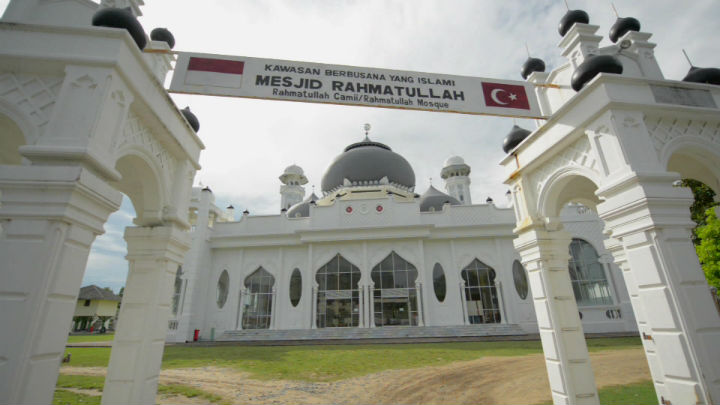WATCH ABOVE: 16×9’s Mike Armstrong returns to Banda Aceh, Indonesia 10 years after a devastating earthquake and tsunami killed more than 230,000 people.

When the tsunami struck on December 26, 2004, Muhammed Nazar was about 60 kilometres out to sea from Banda Aceh, Indonesia.
On his boat on the Indian Ocean, he felt the rumble of what turned out to be a magnitude-9.1 earthquake. But in the deep waters Nazar only felt something a bit strange.
“I thought something was wrong with the engine, but the engine was still on,” he said. “And then I realized it was an earthquake.”
Speaking to Global News with the help of a translator — ahead of the 10 year anniversary of one of the world’s deadliest natural disasters — Nazar said he was fishing in an area of ocean about 80 metres deep.
Underneath him were waves travelling at jet speed. Those waves would be upwards of three storeys high by the time they slammed into the shore of his Banda Aceh and ripped much of the city to shreds.
“There were waves, but not big waves,” he told Global News reporter Mike Armstrong. “I did not know what happened in the town.”
But he did get an “uncomfortable” feeling and steered his boat back to shore.
- Officials stress Calgarians must save water after Bearspaw main break sees no drop in usage
- Snowmobiler dies in avalanche in Rocky Mountains in northeastern B.C.
- Yukon-Alaska border rocked by 3 earthquakes in final hours of 2025
- Canadians ring in 2026 with ‘invigorating’ polar plunges across the country
Nazar’s life may have been spared by the sea itself, but the walls of water that pummeled Banda Aceh and the shores of 13 other countries claimed more than 227,000 lives.
Indonesia’s Aceh province recorded more than half of the total number of dead – an astonishing 167,000 people killed or missing. The quake, the third strongest on record according to the U.S. Geological Survey(USGS), was a megathrust earthquake — the most powerful type of earthquake.
READ MORE: Banda Aceh tsunami sites become destinations for ‘memory tourism’

Get breaking National news
When a megathrust earthquake occurs, one tectonic plate collides with and slides beneath (or subducts) another.
In this case it was the India plate that subducted the overriding Burma plate, according to the USGS. The energy released from the movement of the plates —equivalent to about 23,000 atomic bombs—pushed an estimated 30 cubic kilometres of water up and away from the fault.
The first waves roared ashore in Banda Aceh less than half an hour after the quake, but the tsunami waves went on a destructive path across the Indian Ocean, striking the coasts of Sri Lanka, Thailand, Bangladesh, India, Somalia, Kenya and even as far southwest as South Africa.
Ten years later, it’s impossible for tsunami survivors not to be haunted.
Eddie Quenzalo still remembers the water rising around him as he ran for his life towards the mosque in Lampuuk, a beachside village about 11 kilometres from the centre of Banda Aceh.
Like many others who made it to safety at the Rahmatullah mosque, Quenzalo was trapped high above the water and debris for hours, watching helplessly as bodies floated to the surface.
After the water finally began to go down, Quenzalo had to go about a grim task of turning over body after body to find the remains of loved ones.
In the end, the mosque was almost all that was left. Today, a 500-metre swath of trees stretches from the mosque to shoreline. After the tsunami, it looked like a desert.
Mulia Maulida said she was lucky to survive, Her brother, grandmother, cousin and aunt, did not. She couldn’t say how many friends died. It was too emotional for her to talk about.
It wasn’t just her family that she lost that day: she lost her future as well. Just 24 years old when the waves came, Maulida was studying electrical engineering,
“Now, I’m a villager,” she said. She also runs a guesthouse for backpackers, but she has little connection to the life she had before Dec. 26, 2004. “I have a new life. I don’t even see my friends from before the tsunami, even if they’re still alive.”
READ MORE: 10 years after tsunami, UN envoy says more focus needed on reducing risks
She said she is happy with the home and business she has made for herself. Therapy, provided by a non-government relief agency helped. A year after the tsunami hit, she was still having flashbacks and had trouble controlling her emotions herself.
That’s not the only thing it helped her with.
“It helped because… I can go and see the waves again and I live near the shore again.”
With reporting from Mike Armstrong in Banda Aceh, Indonesia













Comments